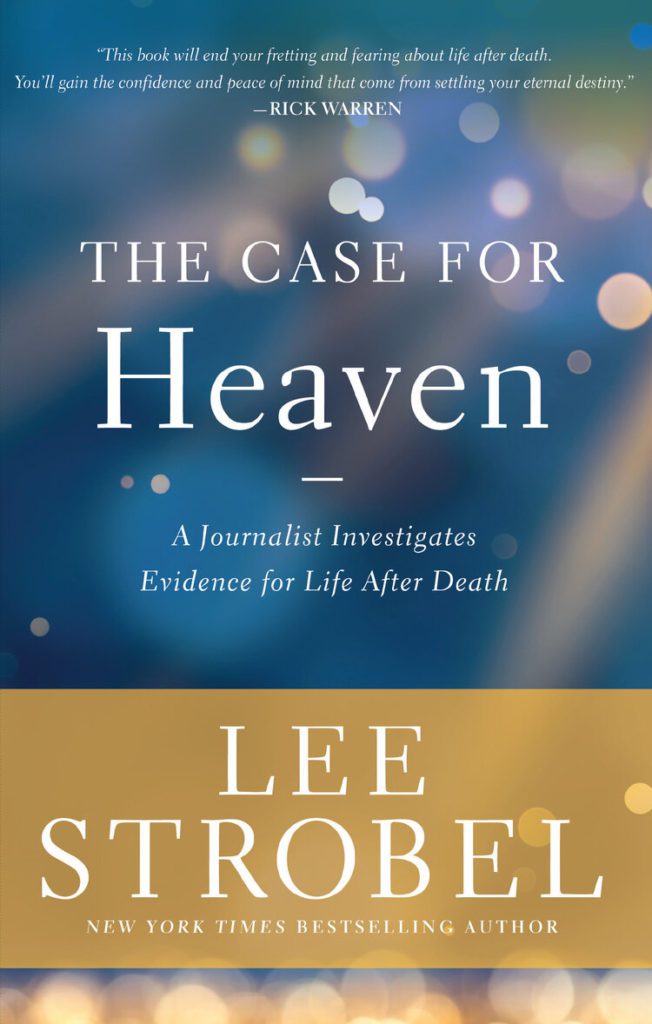How Easter killed my faith in atheism
By Lee Strobel
It was the worst news I could get as an atheist: my agnostic wife had decided to become a Christian. Two words shot through my mind. The first was an expletive; the second was “divorce.”

I thought she was going to turn into a self-righteous holy roller. But over the following months, I was intrigued by the positive changes in her character and values. Finally, I decided to take my journalism and legal training (I was legal editor of the Chicago Tribune) and systematically investigate whether there was any credibility to Christianity.
Maybe, I figured, I could extricate her from this cult.
I quickly determined that the alleged resurrection of Jesus was the key. Anyone can claim to be divine, but if Jesus backed up his claim by returning from the dead, then that was awfully good evidence he was telling the truth.

For nearly two years, I explored the minutia of the historical data on whether Easter was myth or reality. I didn’t merely accept the New Testament at face value; I was determined only to consider facts that were well-supported historically. As my investigation unfolded, my atheism began to buckle.
Was Jesus really executed? The evidence is so strong that even atheist historian Gerd Lüdemann said his death by crucifixion was “indisputable.”
Is the resurrection a legend? Not a chance. Experts tell us it took more than two generations of time in the ancient world for legend to develop and wipe out a solid core of historical truth. Yet we have a report of the resurrection – that Jesus appeared to named eyewitnesses, including a skeptic and opponent whose lives were changed 180 degrees – which scholars have dated to within months of Jesus’ death.

Was Jesus’ tomb empty? Scholar William Lane Craig points out that its location was known to Christians and non-Christians alike. So if it hadn’t been empty, it would have been highly unlikely for a movement founded on the resurrection to have exploded into existence in the same city where Jesus had been publicly executed just a few weeks before.
Besides, even Jesus’ opponents implicitly admitted the tomb was vacant by saying that his body had been stolen. But nobody had a motive for taking the body, especially the disciples. They wouldn’t have been willing to die brutal martyrs deaths if they knew this was all a lie.
Did anyone see Jesus alive again? We have at least nine ancient sources, both inside and outside the New Testament, that confirm and corroborate the apostles’ conviction that they encountered the resurrected Christ. Repeatedly, these sources stood strong when I tried to discredit them.
Could these encounters have been hallucinations? No way, experts told me. Hallucinations occur in individual brains, like dreams, yet Jesus appeared to groups of people on three different occasions – including 500 at once!
Was this some other sort of vision, perhaps prompted by the apostles’ grief over their leader’s execution? This wouldn’t explain the dramatic conversion of Saul, an opponent of Christians, or James, the once-skeptical half-brother of Jesus.
Neither was primed for a vision, yet each saw the risen Jesus and later died proclaiming he had appeared to him. Besides, if these were visions, the body would still have been in the tomb.
Was the resurrection simply the recasting of ancient mythology, akin to the fanciful tales of Osiris or Mithras? If you want to see a historian laugh out loud, bring up that kind of pop-culture nonsense.
One by one, my objections evaporated. I read books by skeptics, but their counter-arguments crumbled under the weight of the historical data. No wonder atheists so often come up short in scholarly debates over the resurrection.
In the end, after I had thoroughly investigated the matter, I reached an unexpected conclusion: it would actually take more faith to maintain my atheism than to become a follower of Jesus.

And that’s why I’m now celebrating my 38th Easter as a Christian. Not because of wishful thinking, the fear of death, or the need for a psychological crutch, but because of the facts.
New York Times best-selling author Lee Strobel leads the Lee Strobel Center for Evangelism and Applied Apologetics at Colorado Christian University (www.CCU.edu/strobelcenter).





